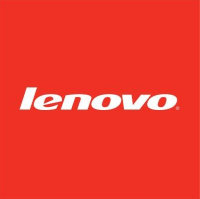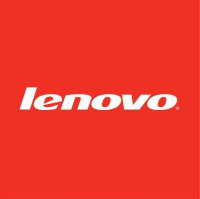
Lenovo Group Ltd
HKEX:992


| US |

|
Johnson & Johnson
NYSE:JNJ
|
Pharmaceuticals
|
| US |

|
Berkshire Hathaway Inc
NYSE:BRK.A
|
Financial Services
|
| US |

|
Bank of America Corp
NYSE:BAC
|
Banking
|
| US |

|
Mastercard Inc
NYSE:MA
|
Technology
|
| US |

|
UnitedHealth Group Inc
NYSE:UNH
|
Health Care
|
| US |

|
Exxon Mobil Corp
NYSE:XOM
|
Energy
|
| US |

|
Pfizer Inc
NYSE:PFE
|
Pharmaceuticals
|
| US |

|
Palantir Technologies Inc
NYSE:PLTR
|
Technology
|
| US |

|
Nike Inc
NYSE:NKE
|
Textiles, Apparel & Luxury Goods
|
| US |

|
Visa Inc
NYSE:V
|
Technology
|
| CN |

|
Alibaba Group Holding Ltd
NYSE:BABA
|
Retail
|
| US |

|
3M Co
NYSE:MMM
|
Industrial Conglomerates
|
| US |

|
JPMorgan Chase & Co
NYSE:JPM
|
Banking
|
| US |

|
Coca-Cola Co
NYSE:KO
|
Beverages
|
| US |

|
Walmart Inc
NYSE:WMT
|
Retail
|
| US |

|
Verizon Communications Inc
NYSE:VZ
|
Telecommunication
|
Utilize notes to systematically review your investment decisions. By reflecting on past outcomes, you can discern effective strategies and identify those that underperformed. This continuous feedback loop enables you to adapt and refine your approach, optimizing for future success.
Each note serves as a learning point, offering insights into your decision-making processes. Over time, you'll accumulate a personalized database of knowledge, enhancing your ability to make informed decisions quickly and effectively.
With a comprehensive record of your investment history at your fingertips, you can compare current opportunities against past experiences. This not only bolsters your confidence but also ensures that each decision is grounded in a well-documented rationale.
Do you really want to delete this note?
This action cannot be undone.

| 52 Week Range |
7.89
12.08
|
| Price Target |
|
We'll email you a reminder when the closing price reaches HKD.
Choose the stock you wish to monitor with a price alert.

|
Johnson & Johnson
NYSE:JNJ
|
US |

|
Berkshire Hathaway Inc
NYSE:BRK.A
|
US |

|
Bank of America Corp
NYSE:BAC
|
US |

|
Mastercard Inc
NYSE:MA
|
US |

|
UnitedHealth Group Inc
NYSE:UNH
|
US |

|
Exxon Mobil Corp
NYSE:XOM
|
US |

|
Pfizer Inc
NYSE:PFE
|
US |

|
Palantir Technologies Inc
NYSE:PLTR
|
US |

|
Nike Inc
NYSE:NKE
|
US |

|
Visa Inc
NYSE:V
|
US |

|
Alibaba Group Holding Ltd
NYSE:BABA
|
CN |

|
3M Co
NYSE:MMM
|
US |

|
JPMorgan Chase & Co
NYSE:JPM
|
US |

|
Coca-Cola Co
NYSE:KO
|
US |

|
Walmart Inc
NYSE:WMT
|
US |

|
Verizon Communications Inc
NYSE:VZ
|
US |
This alert will be permanently deleted.
 Lenovo Group Ltd
Lenovo Group Ltd
Lenovo Group Ltd
Lenovo Group Ltd., a titan in the world of technology, began its journey in 1984 in Beijing as Legend, a small computer venture. As the market for PCs exploded, Lenovo seized the opportunity by marrying cutting-edge innovation with strategic acquisitions. In 2005, it made headlines by purchasing IBM's Personal Computing Division, a bold move that catapulted Lenovo onto the global stage, transforming it into one of the largest PC vendors in the world. This acquisition not only expanded its product line but also granted Lenovo access to a wealth of technology and a prestigious brand name that resonated with corporate clients. Over time, Lenovo’s innovative spirit continued to drive its focus beyond PCs to include smartphones, tablets, and other smart devices, all contributing to its revenue stream.
Today, Lenovo operates mainly across three business segments: Intelligent Devices Group, Infrastructure Solutions Group, and Solutions & Services Group. Its core business revolves around the development, manufacturing, and sale of personal computers, workstations, and smart devices under its flagship brands, including ThinkPad and Yoga, which deliver consistent revenue through both consumer and enterprise markets. Furthermore, Lenovo capitalizes on the growing demand for hybrid cloud infrastructure and data center solutions by providing tailored services through its Infrastructure Solutions Group. Additionally, the Solutions & Services Group provides a range of software and service solutions, enhancing customer engagement and providing recurring revenue streams. With a strategic emphasis on integrating hardware, services, and solutions, Lenovo is positioned not just as a hardware manufacturer, but as a comprehensive technology solutions provider, capable of navigating and thriving in the rapidly evolving tech landscape.

Lenovo Group Ltd., a titan in the world of technology, began its journey in 1984 in Beijing as Legend, a small computer venture. As the market for PCs exploded, Lenovo seized the opportunity by marrying cutting-edge innovation with strategic acquisitions. In 2005, it made headlines by purchasing IBM's Personal Computing Division, a bold move that catapulted Lenovo onto the global stage, transforming it into one of the largest PC vendors in the world. This acquisition not only expanded its product line but also granted Lenovo access to a wealth of technology and a prestigious brand name that resonated with corporate clients. Over time, Lenovo’s innovative spirit continued to drive its focus beyond PCs to include smartphones, tablets, and other smart devices, all contributing to its revenue stream.
Today, Lenovo operates mainly across three business segments: Intelligent Devices Group, Infrastructure Solutions Group, and Solutions & Services Group. Its core business revolves around the development, manufacturing, and sale of personal computers, workstations, and smart devices under its flagship brands, including ThinkPad and Yoga, which deliver consistent revenue through both consumer and enterprise markets. Furthermore, Lenovo capitalizes on the growing demand for hybrid cloud infrastructure and data center solutions by providing tailored services through its Infrastructure Solutions Group. Additionally, the Solutions & Services Group provides a range of software and service solutions, enhancing customer engagement and providing recurring revenue streams. With a strategic emphasis on integrating hardware, services, and solutions, Lenovo is positioned not just as a hardware manufacturer, but as a comprehensive technology solutions provider, capable of navigating and thriving in the rapidly evolving tech landscape.





























 You don't have any saved screeners yet
You don't have any saved screeners yet
